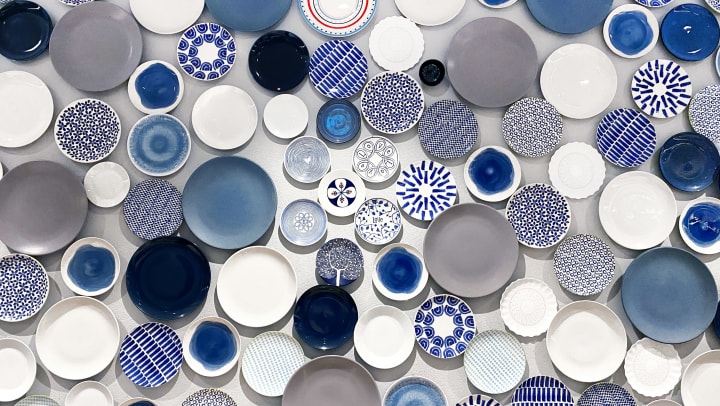The process of packing and moving gets a reputation for being stressful, and sure, it can be. But it doesn’t have to be a big deal. You can transform the moving process from stressful to exciting with a good attitude, an efficient game plan, and a dash of organization. And why shouldn’t it be? You’re setting off on a new adventure in your life. When it comes to the kitchen, don’t sweat it. If you know how to pack dishes for moving, it can be a breeze!
Moving Supplies Needed for Packing Dishes
When packing dishes for moving, focus on keeping items stationary and padded—the less your dishes and glassware move, the better. If items shift around and bump into each other within the box, that’s when breaks happen.
Use Dish Boxes for Extra-Precious Items
If you don’t know how to pack dishes for moving, you may have never heard of dish boxes, but they’re a dish-packing secret weapon. Dish boxes are designed to hold dishes and glassware, offering thicker padding and better shock absorption than standard boxes. Some designs also have an internal partition that you can use to section-off different stacks of dishes to keep them organized and secure them from moving around. If you don’t have a ton of dishes, you may opt to use dish boxes for all of your dishes, and there’s no reason not to—the only limiting factor is your budget, as they’re more expensive than standard moving boxes.
What You’ll Need for Packing Dishes for Moving
The list of packing items you’ll need for dishes is simple!
- Packing paper
- Packing tape
- Labeling items (i.e., stickers and markers)
- Boxes (specialty packing boxes or regular medium-sized boxes)
Of these, packing paper is by far the most essential item. You’ll use that to keep the dishes from moving and offer some cushioning, so don’t skimp—get more than you think you’ll need, not less.
About newspapers, bubble wrap, and foam sheets
Some people swap newspapers for packing paper or use bubble wrap and thin foam sheets. That’s fine, but it’s not our recommendation. Newspaper can leave transferred ink on your dishes, for one. Usually, black ink streaks will wash off, but there’s no guarantee it won’t leave stains depending on the dish’s material, so most professionals suggest sticking to packing paper. Bubble wrap is OK, as are foam sheets. (Bubble wrap takes up more space than foam sheets, meaning you’ll fit fewer dishes in each box.) These items aren’t usually necessary, though, and the name of the game for this article is making the process as stress-free as possible—so for our purposes, packing paper alone is just fine.
Step 1: Prepare Your Boxes
Assemble your boxes on a flat surface, and secure them thoroughly with packing tape. Don’t skimp, and make sure the bottom is well-supported. A lot of dish disasters happen when the bottom of a moving box gives out when the box is being carried, causing the dishes to drop out of the bottom. Now is also an excellent time to label your boxes based on how you’re organizing your dishes—perhaps all the plates are going into the same boxes, with bowls and glassware in others, for example. Or maybe you’re splitting up the dishes you use daily from the fine china that’s only for display purposes. However you choose to organize your dishes, take a moment to write what’s going inside the box on the box itself. You’ll thank yourself later. Make sure to write “FRAGILE” outside or use “fragile” stickers, too!
Step 2: Put Dishes in the Boxes
Professionals know that how to pack dishes for moving the proper way is all about maximizing stability. Keep that in mind as you complete these steps:
- Line the bottom of the box with a layer of crumpled packing paper several inches thick.
- Lay out a sheet of packing paper, then add one dish. Wrap each dish individually. Most people put the dish in the center, then fold the corners inward over the dish. For drinkware, put the glass in the corner, then roll it diagonally, folding in the sides as you roll.
- For drinkware, also stuff packing paper inside the cup or glass to fill the hollow space.
- Place items in rows. Pack dishes vertically as if you were loading them into a dishwasher. They’re less likely to break this way.
- Make sure spaces between dishes are secured with packing paper so that nothing shifts around when you move the box, and there’s padding between each item.
- It’s permissible to add a second layer of dishes or glassware on top of the first. If you do so, put heavier items on the bottom. Make sure there’s another layer several inches thick of padding between the top and bottom layers of items.
- Make sure the entire box is full. Stuff packing paper into empty areas, or fill spaces with dish towels, napkins, oven mitts, etc.
Don’t overload your box! As mentioned before, many dish-moving disasters occur when someone is carrying the box, and the box tears or collapses, spilling its contents. In that situation, it’s also possible to break many dishes at once, which hurts even more. Boxes transporting dishes should be easy to carry. If there’s any doubt about the weight of the box, carry it from the bottom, not handles on the side—provided you can do so securely. It’s much safer to spread dishes across an extra box or two than to push your luck in terms of how heavy you make a box!
Find the wine glasses and make a celebratory toast!
Now that you know how to pack dishes for moving the right way, you can knock out that step of your moving journey in no time. When you’re loading boxes of dishes onto the moving truck, make sure not to put anything on top of them—that’s a recipe for disaster. Put them in a position where they won’t slide, too. And once you get into your new home, unpack them carefully, pour yourself a drink, and toast to the beginning of your life in a wonderful new place!
Visit us at your local BuxBear Storage location to secure a climate-controlled storage unit for all your storage needs! And give us a call with any storage-related questions. We’re happy to help!


